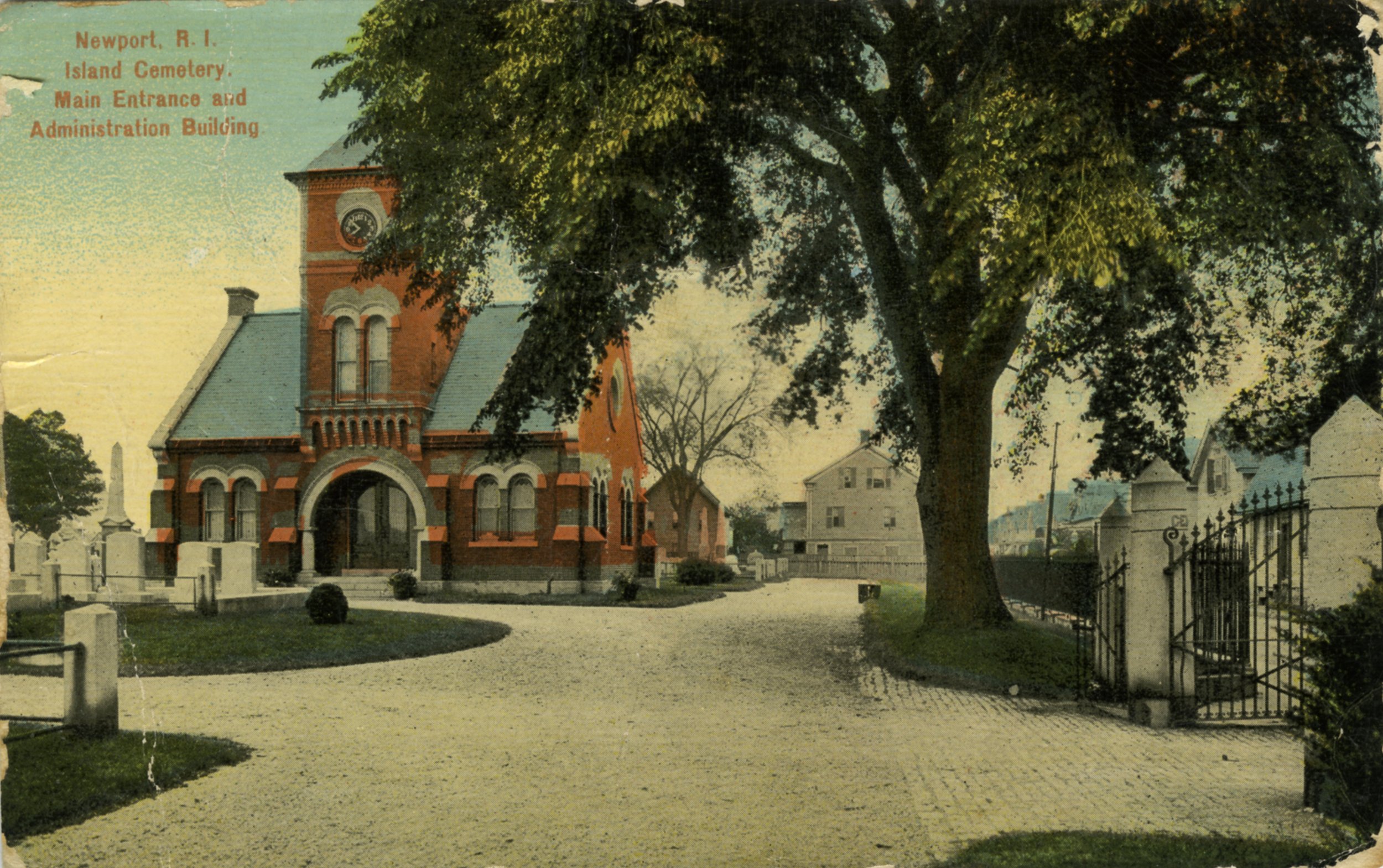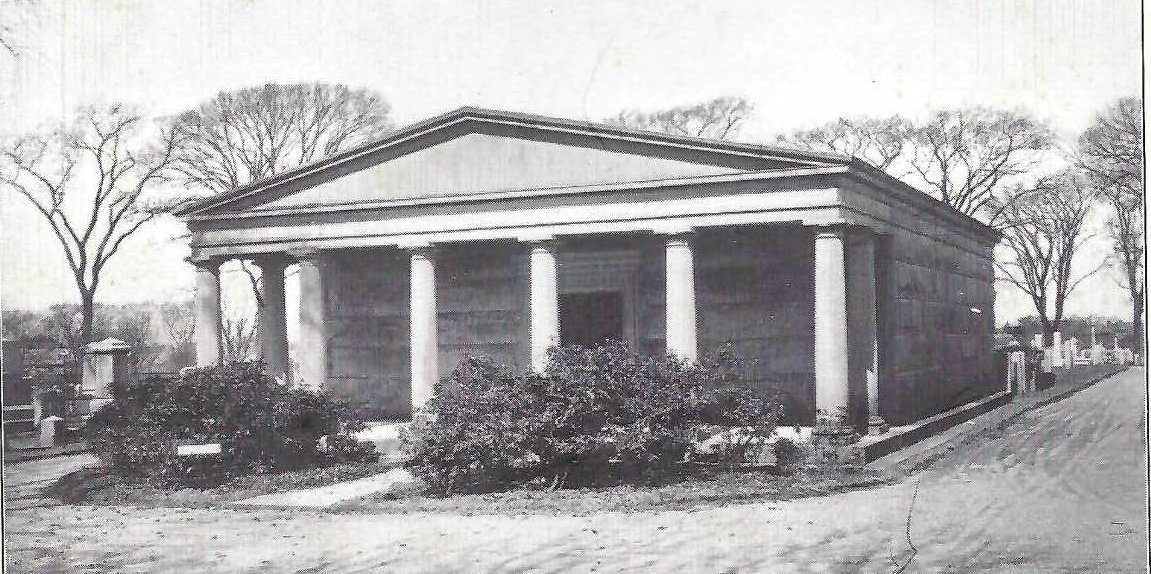History of Island Cemetery
Land for the Common Burying Ground (the Old Burial Ground on the map to the left), the oldest public cemetery in Newport, was given to the town in 1640 by one of its founders, the Reverend John Clarke. Containing modest headstones, many of which date to the seventeenth century, the cemetery was divided by a rod into two sections, one to the south for the burial of freemen, the other, for the enslaved, is called God’s Little Acre.
As the need grew for increased burial space, on May 18, 1836 the town of Newport purchased the higher land surrounding the Common Burying Ground on the north and east that would become known as the Island Cemetery, located on Warner Street.
Several additions were made to the original plot over the years, thus affording better conveniences, and rendering this spot a fitting repository for the dead. In 1839, a certain portion was surveyed and laid out into one hundred thirty-six lots, each one rod square which were offered for sale at moderate rates. Willow Cemetery was one of the two cemeteries situated on the grounds adjacent to the Island Cemetery. Henry Bull and William W. Freeborn were appointed to lay out the new burial ground in a tasteful, park-like setting which was a new way of designing cemeteries.
Trees and shrubbery were set out, and a substantial fence built; the wall and the gateway costing $831.33. In 1848 a company was formed to whom the town conveyed the grounds. The trustees of the “Island Cemetery Company” were authorized to take care of the property, to grant deeds of lots unsold and to adopt the necessary means for raising funds as might be required for the purposes of the new company.
In 1974, both the Common Burying Ground and the Island Cemetery were listed as a single entry on the National Register of Historic Places. Many of the earlier inscriptions were recorded by Dr. Henry E. Turner, who was involved in an official capacity (secretary of Willow cemetery) with the cemetery. This manuscript is at the Newport Historical Society; typed transcriptions of it, unfortunately made after it had significantly deteriorated, are there and at the Rhode Island Historical Society. Turner’s records have been entered and are coded HET.
At this time, in 2024, we have over 12,000 burials in the Island Cemetery, the Annex, and the Friends Cemetery combined. It should be noted that quite a few of the names predate the official founding of the cemetery, perhaps moved by descendants to this more elegant burial ground or perhaps erected before the cemetery was incorporated.
The Buildings of Island Cemetery
The cemetery is home to several architecturally significant buildings, the office building, the receiving vault (since demolished) and the Belmont Chapel. Work on the cemetery office on Warner Street, designed by Herbert Wilson began in 1902. The one-and-a-half story brick structure (see photo) with a broad arched entrance and a central clock tower was finally opened in 1921 after a redesign to eliminate cracks in the clock tower.
Another important building was a receiving vault (see photo) built to temporarily store bodies in winter months when the ground is too frozen to dig a permanent grave. It was designed by Edwin Wilbar in 1894 in a temple form. It fell into disrepair and was finally demolished in 1985.
The August Belmont Memorial Chapel was commissioned by August Belmont in 1886 and deeded to the Island Cemetery for public use in 1888. The photo is a postcard image from early 1900’s.




